Delicious Homemade Chicken Ramen
If you’re craving a bowl of comfort that sings with flavor, look no further! This homemade chicken ramen is a symphony of a rich, savory chicken bone broth, tender roasted chicken, fresh bok choy, and delicate ramen noodles. It’s the perfect meal to warm you up and bring a smile to your face.
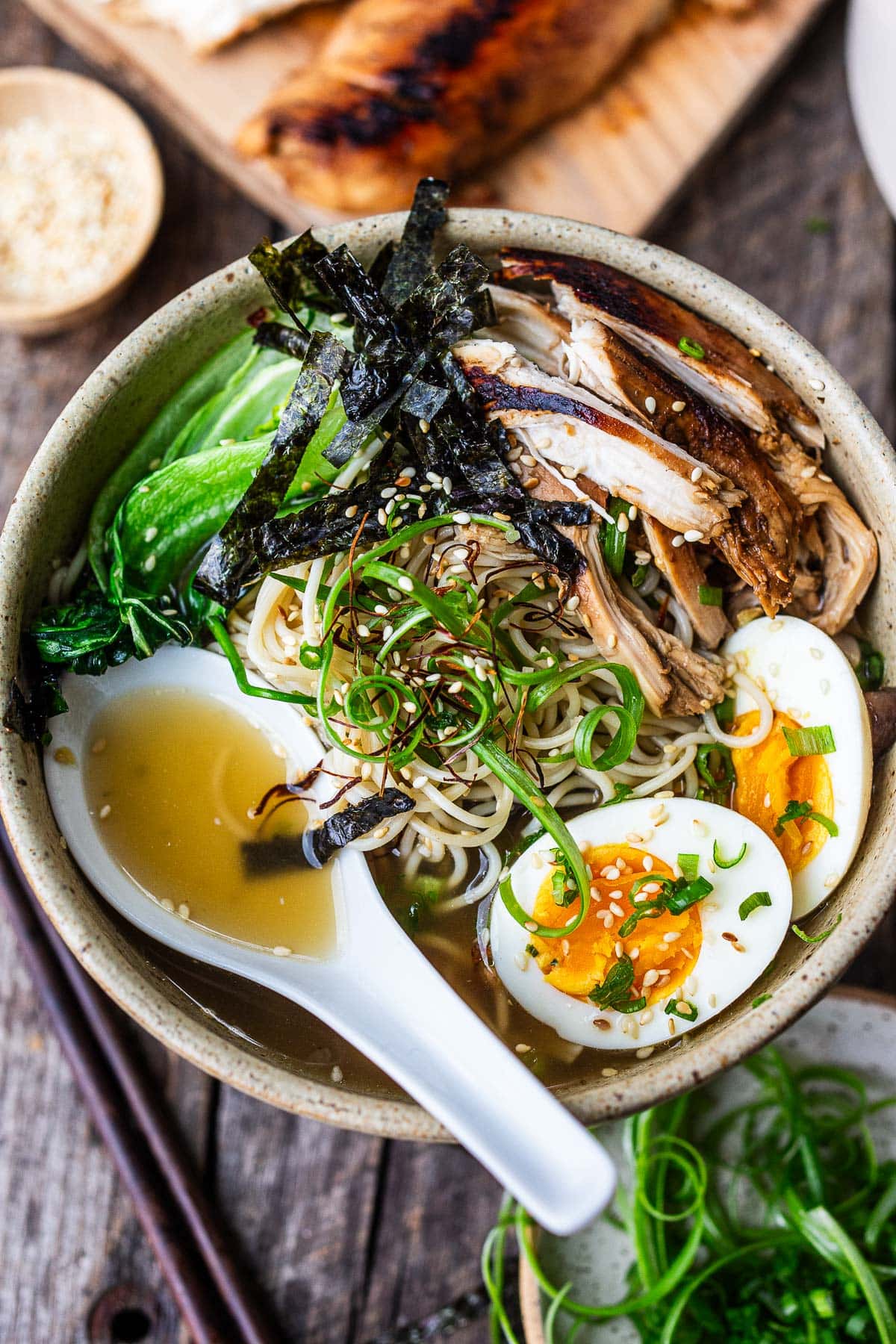
You Will Love This Homemade Ramen!
On my first trip to Japan, I had the most unforgettable experience as I savored a steaming bowl of ramen. It was a moment of pure bliss that has stayed with me ever since. There’s simply something enchanting about a bowl of ramen—especially when made from scratch in your own kitchen.
The secret to an incredible ramen lies in its broth. A delicious homemade chicken broth serves as the foundation. By incorporating fresh ginger, fragrant garlic, earthy mushrooms, and a touch of bonito flakes, we elevate the flavor to new heights. This homemade chicken broth envelops you in warmth and comfort that store-bought versions just can’t replicate.
Slow-simmered chicken bones lend a beautiful richness to the broth. The result is tender noodles swimming in a savory ocean of flavor, topped with roasted chicken, bright bok choy, and a sprinkling of umami-rich nori. Enjoying this dish isn’t just nourishment; it’s a heartfelt experience that truly satisfies the soul.
What is Ramen?
Ramen is a beloved Japanese noodle dish featuring wheat noodles served in a flavorful, often meaty broth. The broth is frequently flavored with soy sauce, miso, or salt. Common toppings include sliced meats, green onions, nori (seaweed), boiled eggs, and assorted vegetables. Known for its comforting qualities, ramen varies widely in flavor and presentation, influenced by regional styles and personal tastes.
Ramen vs. Pho
Though both ramen and pho are delicious noodle soups, they come from different culinary traditions. Pho is a classic Vietnamese dish characterized by a light, aromatic broth seasoned with five-spice and served with rice noodles, bean sprouts, and lime.
On the other hand, ramen comes from Japan, featuring a rich and hearty broth. Its wheat noodles are distinct, and toppings often include a jammy egg, fresh green onions, and tender nori. Each offers a unique dining experience rooted in their cultural backgrounds.
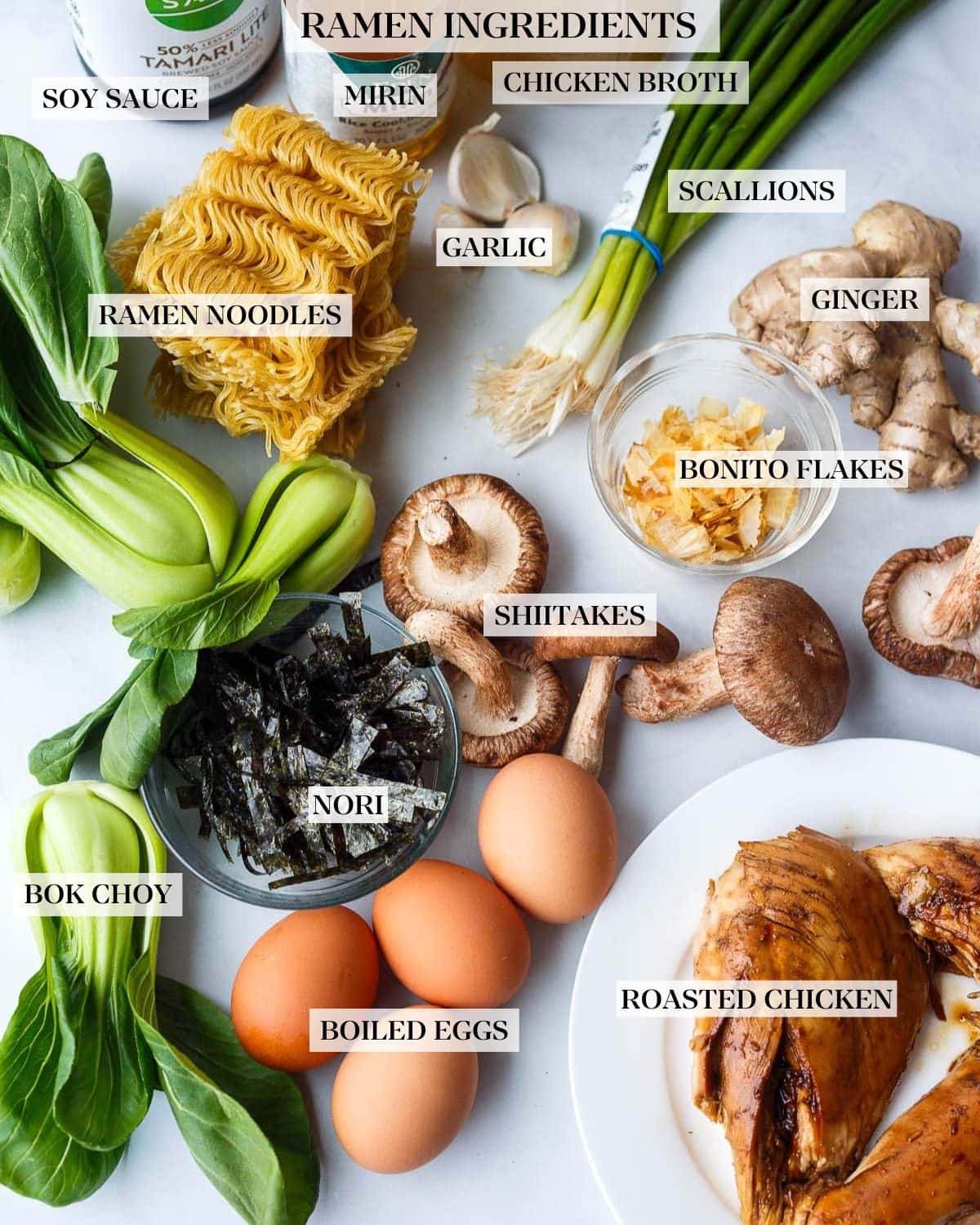
Ramen Noodles Recipe Ingredients
- Cooked chicken breast: Shredded or chopped. Leftover roast chicken works perfectly.
- Ramen noodles: Look for fresh options at local Asian markets for the best texture.
- Chicken broth: A homemade broth elevates the depth of flavor. Feel free to use store-bought if in a pinch.
- Fresh ginger, garlic cloves, and green onions: Essential aromatics that add richness to the broth.
- Sliced shiitake mushrooms: Fresh or dried, they infuse an umami flavor that complements the broth.
- Bonito flakes: Though optional, they add a unique ocean-like flavor to your ramen.
- Soy sauce and mirin: These ingredients bring a salty and tangy character to the broth.
- White pepper: Provides a hint of sweetness and depth.
- Fresh greens: Baby bok choy or any greens you prefer.
- Toppings: Consider soft-boiled eggs, toasted nori, chili threads, or sesame seeds for garnishing.
- Optional vegetables: Shredded carrots, steamed broccoli, mushrooms, bean sprouts, peas, bamboo shoots, spinach, corn—feel free to mix and match!
How to Make Ramen
1. Prepare the Ramen Broth
In a medium saucepan, heat a splash of oil and sauté ginger and garlic over medium-high heat for about a minute. Then, stir in two chopped scallions and sliced shiitake mushrooms, followed by the chicken broth. Let everything come to a simmer, allowing the flavors to meld.
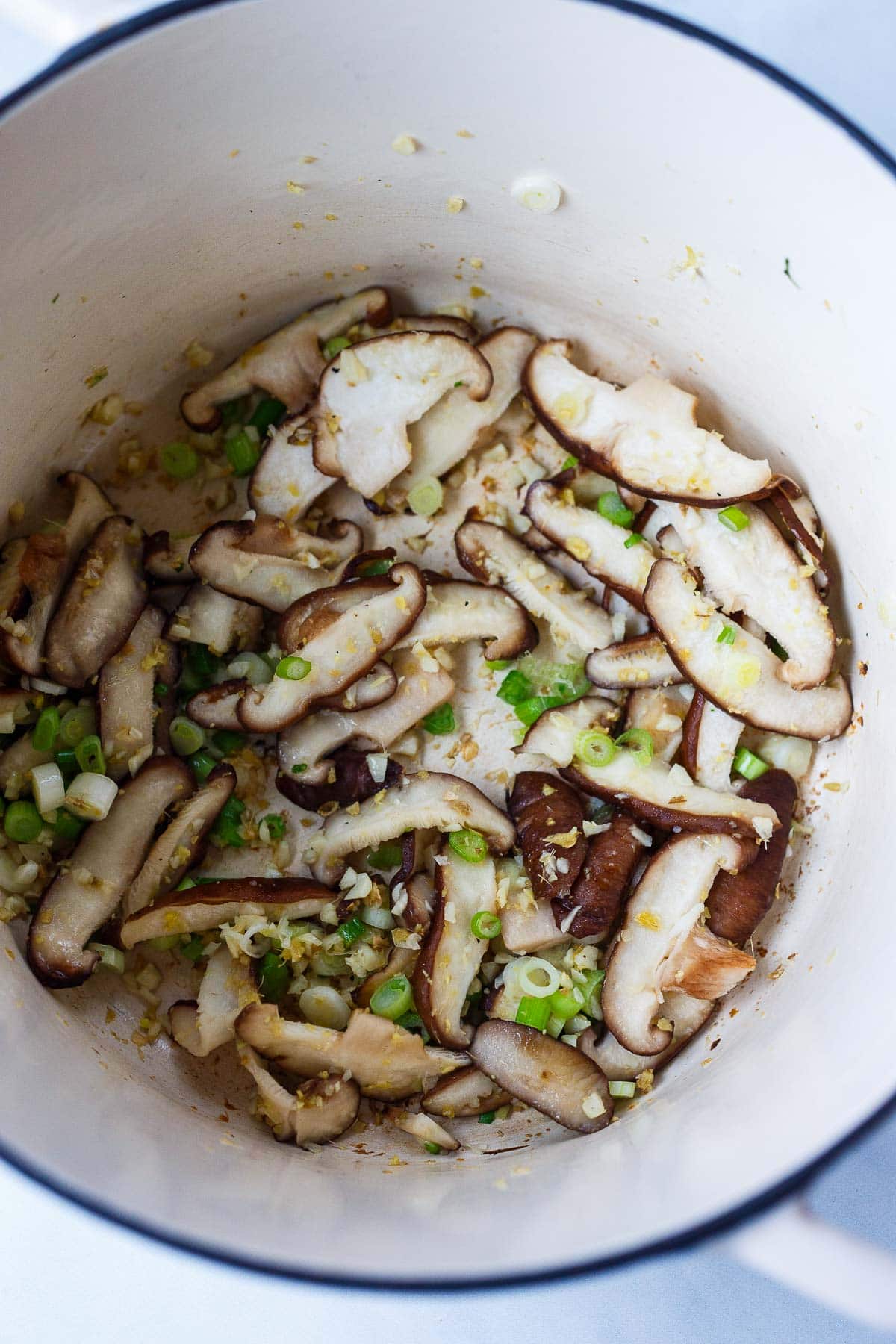
2. Infuse with Bonito Flakes
To add depth, place bonito flakes in a small bowl and pour in a cup of simmering broth. Let sit for 5 minutes. Strain this mixture back into the pot with the rest of the broth. Blend in soy sauce, mirin, and white pepper, stirring to combine well.
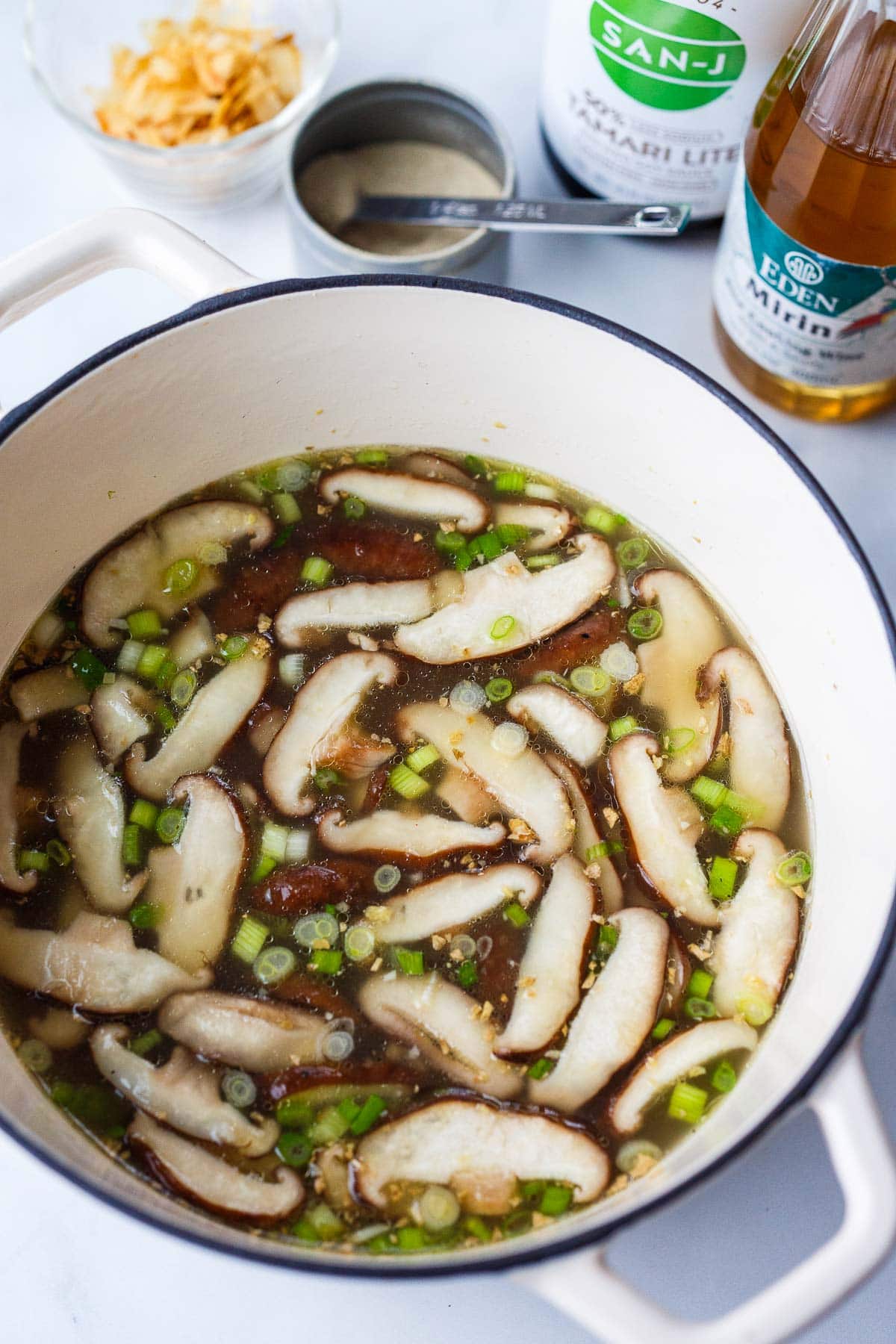
3. Cook the Noodles and Prepare the Vegetables
While your broth is simmering away, cook the ramen noodles in a separate pot according to the package instructions. Just before serving, wilt the bok choy or greens in the broth. Once tender, take the broth off the heat and adjust the seasoning to taste.
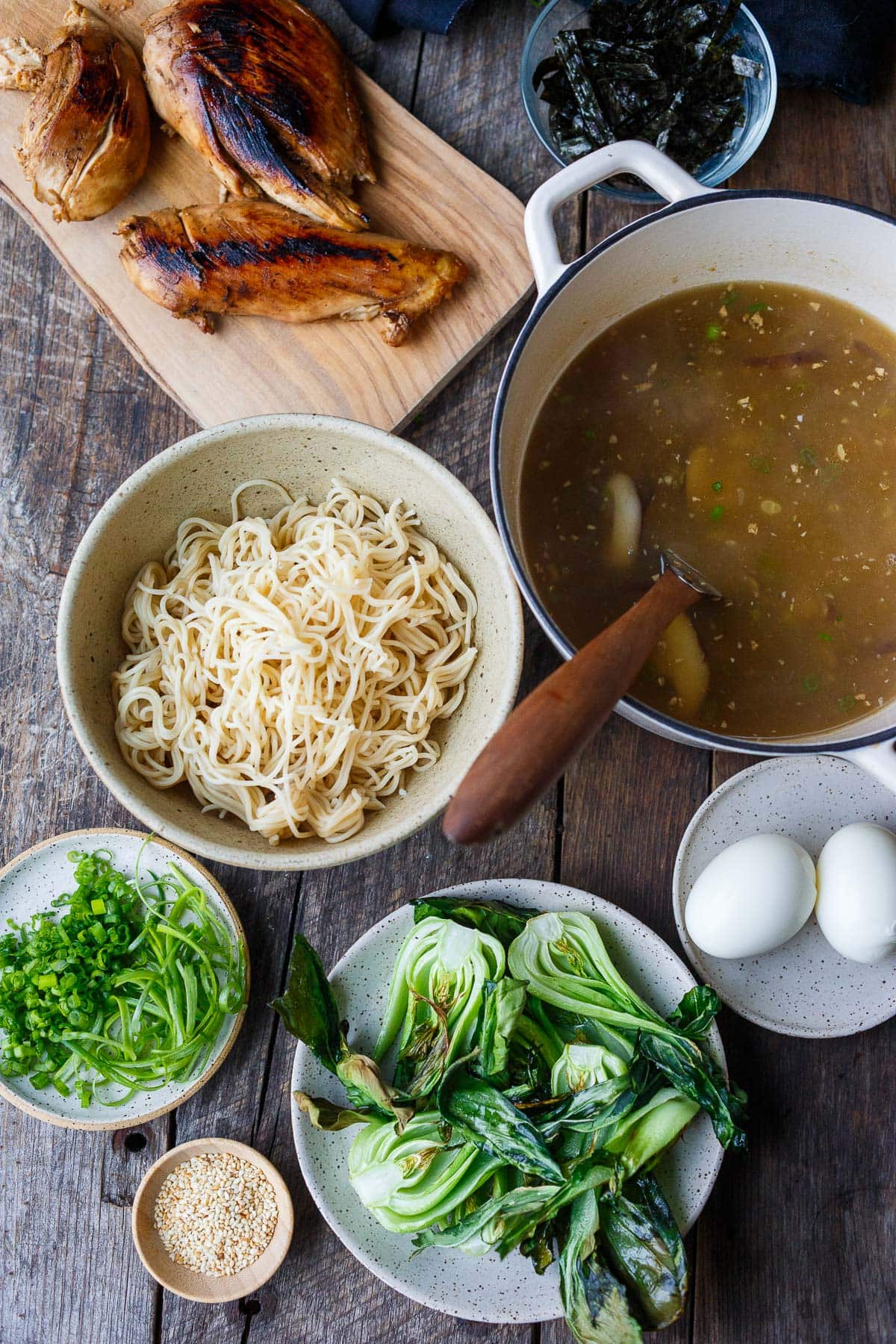
4. Assemble the Ramen
Using tongs, divide the cooked noodles between bowls. Top each bowl with the shredded chicken and a portion of wilted bok choy. Carefully ladle the hot broth over each bowl, filling them generously.
5. Garnish and Serve
Finally, garnish your ramen with fresh scallions, soft-boiled eggs, crispy shallots, and chili threads. If you enjoy a bit of heat, don’t forget to add a drizzle of homemade chili oil or your favorite hot sauce!
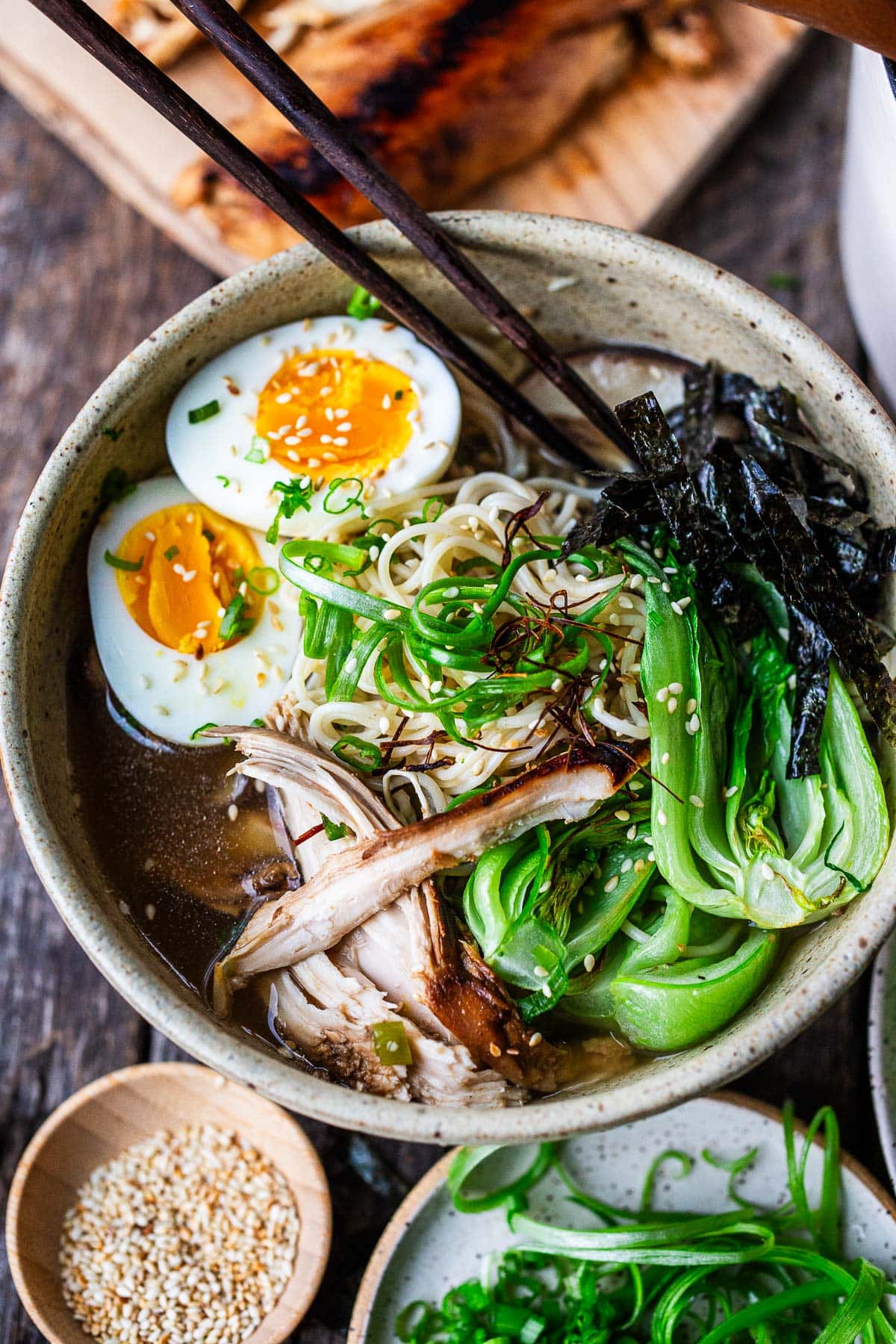
Ramen Recipe Variations
- Protein Options: Experiment with different proteins like roasted turkey, slow-roasted pork belly, or braised beef. For vegetarian lovers, try using crispy tofu instead!
- Diverse Broths: While this recipe uses homemade chicken broth, feel free to switch it up with mushroom broth, dashi, or vegetable broth.
- Add Extra Veggies: Enhance your ramen with shredded carrots, steamed broccoli, bean sprouts, or corn for more flavor and nutrition!
- Customize the Toppings: Use soft-boiled eggs, toasted nori, fresh herbs, or chili flakes—tailor it to your liking!
How to Serve Ramen Soup
To keep the integrity of your broth, add the noodles and toppings to the bowls first, then pour the hot broth over them. This ensures each ingredient retains its distinct flavor, making every bite a delightful experience!
Ramen can certainly stand alone as a satisfying meal, but if you want to elevate your dining experience, consider pairing it with a light appetizer such as a side salad or gyoza.
How to Store Homemade Ramen
To store your ramen, keep the broth and the noodles in separate airtight containers in the refrigerator for optimal freshness for up to 4 days. The broth can also be frozen for up to 6 months, making it easy to prepare future meals!
Chef’s Tips for the Best Ramen
- Cook Noodles Separately: This prevents your broth from becoming starchy or gummy.
- Garnish with Scallion Curls: Slice scallions into thin strips and place them in ice water for a few minutes to create a beautiful garnish.
- Quick Roasted Chicken: Marinate chicken breasts with soy sauce, sesame oil, ginger, garlic, and some seasoning, then roast for a quick, flavorful protein.
- Perfect Soft-Boiled Egg: Simmer eggs gently for 6 minutes, then cool and peel for that perfect jammy result!











